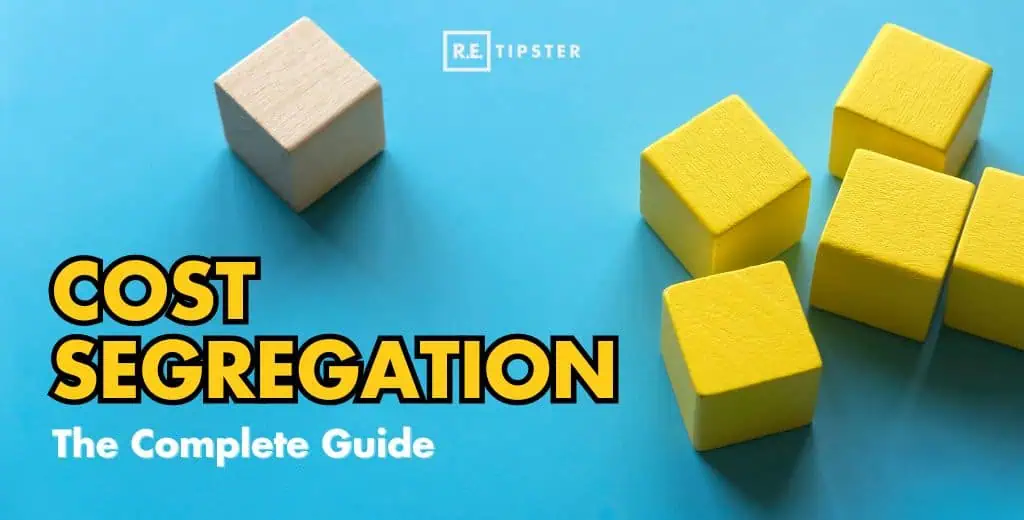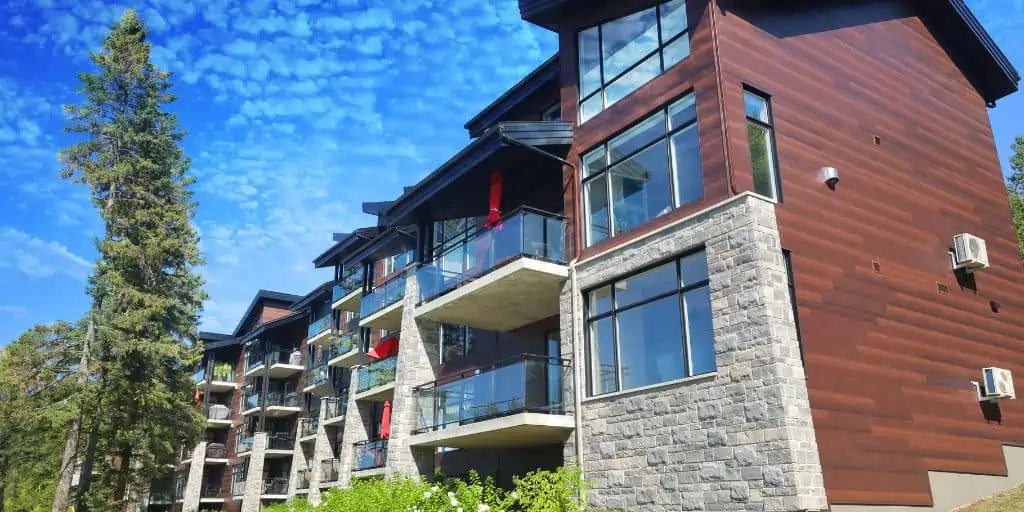
As a real estate investor, you're probably always on the lookout for ways to maximize your returns and minimize your tax burden.
One powerful strategy that often flies under the radar is the cost segregation study.
In this blog post, I’ll explain what cost segregation studies are, why they're valuable, and how you can use them to save huge amounts of money in taxes.
What Is a Cost Segregation Study?
A cost segregation study is a detailed analysis of a property's components, allowing owners to accelerate depreciation deductions and reduce their tax liability.
Instead of depreciating the entire building over 27.5 years (for residential) or 39 years (for commercial), a cost segregation study identifies components that can be depreciated over shorter periods—typically 5, 7, or 15 years.
For example, let's say you own an apartment building. Without a cost segregation study, you'd depreciate the entire building (excluding land value) over 27.5 years. However, with a study, you might find that elements like carpeting, appliances, and some electrical systems can be depreciated much faster, potentially leading to significant tax savings in the early years of ownership.
RELATED: What Is ‘Cost Segregation?'
Why Real Estate Investors Use Cost Segregation Studies
The primary benefit of a cost segregation study for real estate investors is the ability to accelerate depreciation, which can lead to:
- Reduced taxable income in the early years of property ownership.
- Improved cash flow due to lower tax payments.
- The ability to write off disposed assets more quickly when renovating.
These benefits can be particularly powerful when combined with bonus depreciation, which we'll discuss later in this article.
RELATED: How to Calculate Land Value for Taxes and Depreciation
The ROI of Cost Segregation Studies
The return on investment for a cost segregation study can be quite large, more than enough to justify the cost of conducting the study.
According to Zac Prince, CEO of RE Cost Seg, the payback ratio (estimated tax savings relative to the cost of the study) is typically at least 10 to 1 on the low end.
For certain property types, like newly developed self-storage facilities, this ratio could potentially reach 20, 30, or even 40 to 1.
Let's break this down with a simple example:
Suppose you purchase a rental property for $500,000 (excluding land value).
Without a cost segregation study, you'd depreciate about $18,182 per year ($500,000 / 27.5 years). On the other hand, a cost segregation study might help you depreciate $100,000 in the first year. If you're in the 32% tax bracket, that's a potential tax savings of $26,182 in the first year alone ($100,000 – $18,182 = $81,818 x 32% = $26,182)!
Ideal Properties for Cost Segregation Studies
Cost segregation studies can be beneficial for a wide range of properties, but they're especially valuable for:
- Recently purchased or constructed properties.
- Properties with a value of at least $200,000 (excluding land).
- Properties owned for less than 10 years.
- Commercial property depreciation (such as office buildings, retail spaces, and warehouses).
- Multifamily residential properties.
- Hotels and resorts.
As a rule of thumb, if you own an investment property worth at least $200,000 that you've held for less than 10 years and you have passive income you're paying taxes on, there's a good chance a cost segregation study could benefit you.
When Cost Segregation Might Not Make Sense
While cost segregation studies can be powerful, they're not always the right choice. Here are some scenarios where it might not make sense:
- If you don't have passive income to offset the accelerated depreciation.
- If the property value is too low (generally under $200,000).
- If you've owned the property for more than 10 years.
- If you're planning to sell the property in the very near future.
Remember, the goal is to ensure that the tax savings outweigh the cost of the study. Always consult your CPA to determine if a cost segregation study suits your situation.
How Much Does a Cost Segregation Study Cost?
The cost of a study can vary based on the property type, size, complexity, and who is preparing the study. Some of the best prices available in the industry can be found from RE Cost Seg:
- Single-family homes:
- $895 for a “rapid report” (DIY option)
- $2,150 for a fully engineered study with a virtual site visit
- Small commercial properties: $2,500 to $5,000
- Larger commercial properties: $5,000 to $10,000
- Very large or complex properties: Up to $15,000 to $20,000
It's worth noting that these prices are generally 30% to 50% cheaper than traditional cost segregation providers, thanks to the use of technology and virtual site visits.
Bonus Depreciation and Its Impact
Bonus depreciation is a tax incentive that allows businesses to immediately deduct a large percentage of the purchase price of eligible assets rather than writing them off over their “useful life.” This can significantly enhance the benefits of a cost segregation study.
However, the 100% bonus depreciation expired at the end of 2022. A phased reduction is now in effect, reducing the maximum allowable depreciation in increments of 20% every year.
| First year in service | Maximum bonus depreciation rate |
| 2017 to 2022 | 100% |
| 2023 | 80% |
| 2024 | 60% |
| 2025 | 40% |
| 2026 | 20% |
| 2027 and beyond | 0% |
The phase-out of bonus depreciation makes cost segregation studies even more timely for real estate investors looking to maximize their tax benefits in the coming years.
Finding the Right Cost Segregation Specialist
When choosing a cost segregation study provider, consider the following:
- Experience and qualifications: Look for firms with a track record in your property type.
- Methodology: Ensure they follow IRS guidelines for cost segregation and use qualified professionals.
- Audit support: Check if they offer audit protection and will defend their study if questioned by the IRS.
- Pricing: Get multiple quotes, but remember that the cheapest option isn't always the best.
- Turnaround time: Ask how long the study will take to complete.
Always involve your CPA in the decision-making process. They can help you understand how a cost segregation study will impact your overall real estate tax strategy and whether it's the right move for your specific situation.
Maximizing Returns With Cost Segregation
Cost segregation studies can be a powerful tool in a real estate investor's tax strategy. Accelerating depreciation for property investors can potentially lead to significant tax savings and improved cash flow, especially in the early years of property ownership. If you own investment real estate, particularly properties valued at $200,000 or more that you've purchased in the last decade, it's worth exploring if a cost segregation study is beneficial.
However, like any tax strategy, it's not a one-size-fits-all solution. The benefits can vary depending on your specific circumstances, including the type and value of your properties, your overall tax situation, and current tax laws.
Remember, in real estate investing, knowledge truly is power—and money. Understanding and leveraging strategies like cost segregation can help you maximize your returns and build long-term wealth through real estate. Consult your CPA and consider getting a free proposal from a reputable cost segregation provider to understand the potential benefits for your specific properties.
If you are still looking for an accountant, check out our guide on Finding The Right Accountant For Your Real Estate Business or peruse our community-built professional accountants directory.
FAQs: Cost Segregation Studies
What are the common types of property components that can be segregated for faster depreciation?
Cost segregation studies identify components that can be depreciated over shorter periods (5, 7, or 15 years) instead of the standard 27.5 or 39 years.
Common components include:
- Building systems: HVAC, plumbing, electrical, fire suppression
- Interior finishes: Carpeting, flooring, wall coverings, paint
- Personal property: Furniture, fixtures, equipment, appliances
- Site improvements: Landscaping, fencing, paving, parking lots
What are the potential downsides of a cost segregation study?
While the benefits are significant, there are potential drawbacks. The study isn't free, and the accelerated depreciation might lead to higher taxes in later years when the property is sold. This is because the accelerated depreciation reduces your tax liability in the early years, but you'll have less depreciation to claim in later years, potentially increasing your taxable income when you sell.
Additionally, the IRS may scrutinize the study, potentially leading to audits and challenges. If the study is not properly prepared or if the IRS disagrees with the methodology, you could be required to pay back the tax savings, plus penalties and interest.
Can I do a cost segregation study myself?
While DIY options exist, they are generally not recommended for complex properties. Professional studies provide greater accuracy and IRS compliance. However, if you own a simple single-family home, a DIY “rapid report” might be a cost-effective option. Consult with your CPA to determine the best approach for your situation.












